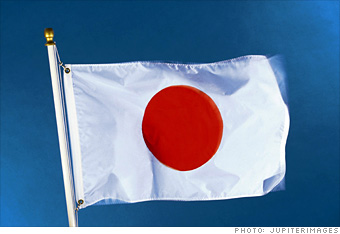Tuesday, January 29, 2013
Towards reliability for SMRT, but not growth
SMRT just released their 3rd quarter results and they say that their profitability will deteriorate due to higher operating costs.Staff costs for the Train and Bus operations are expected to significantly increase due to increased headcounts and market wage adjustments. Maintenance for train operations will increase due to enlarged train fleet and continuing to improve the reliability of the aging fleet and rail network.
Source: http://info.sgx.com/webcoranncatth.nsf/VwAttachments/Att_49DF1DD28B2E1D4D48257B020034CA10/$file/results.pdf?openelement
I personally do not think it is a good choice to acquire any amount of SMRT shares due to their increased operational costs and their lack of visible growth plans or investments for the company. On top of the high operational costs, they are incurring more debts in order to pay dividends to their shareholders. Despite the rapid expansion of the MRT network in Singapore, these railway networks will likely incur costs to maintain. As reliability is the key to their operations, long term returns will not be sustainable, especially if they continue to pay dividends to the shareholders in the expense of debt.
*Disclaimer: I am not liable for any investment decision you make with regards to this post. Make your own investment decisions.
Monday, January 21, 2013
My thoughts on the recent property cooling measures
Private property prices are soaring but the price of HDB public housing is lagging behind. These recent cooling measures introduced by the government are not meant to bring down the stock market, but rather to slow down the bigger bubble created by the property sectors. Minister Tharman qualified that they “don’t intend to engineer a market crash.”
Source: http://sbr.com.sg/residential-property/news/city-developments-be-badly-hit-property-cooling-measures
Source: http://sbr.com.sg/residential-property/news/city-developments-be-badly-hit-property-cooling-measures
In my opinion, the government is expecting property prices in Singapore to continue to appreciate, but is trying to slow down the price increase rate so as to allow the middle income Singaporeans to afford public housing and likely, to avoid a property bubble that affected Japan from 1986 to 1991. Bank borrowing rates now are cheap and thus, spurring foreigners to venture into the Singapore property market.
An example of this would be the crash of the Japanese asset price bubble from 1986 to 1991. The bubble's subsequent collapse lasted for more than a decade with stock prices initially bottoming in 2003. Due to the easily obtainable credit that helped fuel the real estate bubble for several years, and banks issuing out loans with low interest rates and have very little guarantee of being repaid.
More info here: http://www.docstoc.com/docs/77782026/Japanese-Asset-Price-Bubble---PowerPoint
An example of this would be the crash of the Japanese asset price bubble from 1986 to 1991. The bubble's subsequent collapse lasted for more than a decade with stock prices initially bottoming in 2003. Due to the easily obtainable credit that helped fuel the real estate bubble for several years, and banks issuing out loans with low interest rates and have very little guarantee of being repaid.
More info here: http://www.docstoc.com/docs/77782026/Japanese-Asset-Price-Bubble---PowerPoint
Current housing loan from Bank of China (BOC)
Average of (SIBOR + SOR /2) is approximately 0.4% per month.
The per year interest rates in general works out to be between 1.2-1.5% which is considered to be very low.
Example of a possible risk of increasing interest rates
If interest rates will go up from 1.5% to 6%, property investors will start to panic when they do not have enough money to pay the loans and start to default on their housing loans. Banks will start selling off properties at dirt cheap prices after confiscating from people who defaulted on their housing loans. This risk if applied to Singapore will greatly affect the property market as Singapore has a small land bank and if cheap properties fall into the hands of foreigners, it will affect the credibility of the Government to provide affordable housing for the public.
Conclusion
Further cooling measures could be expected from the government to curb property prices. However, some of the developers will still be able to sell off their properties quickly due to the prime location of their development properties. One example is Bukit Sembawang, which prices soar from $4.85 to $6.5 in a span of about 6-7 months. I will not further elaborate the details but if you are interested to see what land they develop properties on, visit http://www.bukitsembawang.sg/
Friday, January 18, 2013
Bullish on the Airline Maintenance business
The airline industry is set to expand fast within the next few years with companies already submitting their orders for more planes to cope with the increased demand for transport or vacation flights. With the increased number of flights operation to different parts of the world, the demand for maintenance, repair, and overhaul (MRO) for flights have to be expanded to cater to more planes. SIA Engineering and ST Engineering are both MRO companies which are set to benefit from the aviation expansion. With more flights landing into Changi airport, SIA Engineering will expect more maintenance numbers to contribute to their revenue.
AirAsia to buy 100 Airbus planes (dated 15 Dec 12)
source: http://www.philstar.com/business/2012/12/15/886091/airasia-buy-100-airbus-planes
Hawaiian plans to buy 16 new Airbus planes (dated 8 Jan 13)
source: http://news.yahoo.com/hawaiian-plans-buy-16-airbus-210437949.html
Oman set to buy 20 aircraft from BAe (dated 21 Dec 12)
Source: http://www.guardian.co.uk/world/2012/dec/21/oman-bae-fighter-jet-sale
China to buy 50 Airbus planes for $3.5bn (dated 30 Aug 12)
Source: http://www.bbc.co.uk/news/business-19419526
Wednesday, January 9, 2013
What investor are you?
Are you a dividend investor?
A dividend investor invests in stocks which provides the person a high return of 7-12% in dividends per year. Neratel, SATS
Are you a growth investor?
A growth investor invests in stocks which provide low dividends of about 3-5% but their value increases along with time. Etc. Super Group, Yeo Hup Seng.
Subscribe to:
Comments (Atom)





